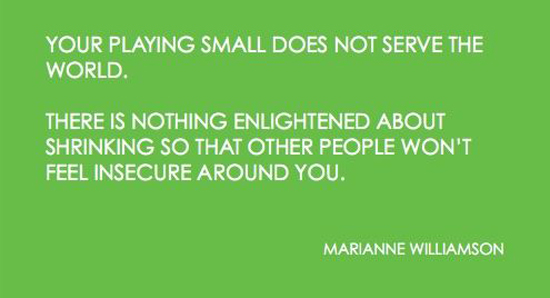When Negative Thoughts Keep You Down: How to Break the Addiction
“We think we are our thinking, and we even take that thinking as utterly ‘true’, which removes us at least two steps from reality itself.” – Richard Rohr

Do you frequently obsess over worst-case scenarios? Do you struggle to think well of yourself or others? Are you frequently stressed, anxious, or depressed? You may be suffering from an addiction to your negative thoughts.
We all fall into patterns of negative thinking from time to time, often triggered by difficult circumstances or everyday stress. But when that pattern occurs over a long period of time, it can degrade our health in body, mind, and spirit.
When bad things happen to us, we can feel incredibly helpless. Sometimes the way we fight back against this feeling is by making negative thinking a default way of life. It satisfies our deep need for a sense of control over our lives. It keeps us from being disappointed when disaster visits.
We trade our own joy and happiness for certainty. It’s a huge price to pay for a bill of goods. Because in truth, the certainty we crave is an illusion.
Some of us have experienced the toxic effects of negative thinking in our own lives. Especially in childhood, some of us were convinced we had nothing good to contribute to the world, we spoke very little and avoided people. We were looking for the worst in others rather than the best. This negative thinking became a compulsion. Then, as we grew into adulthood, we realized how much this addiction was costing us, as our most important relationships suffered needlessly. We needed to break the addiction. Some of us managed to do it in various ways.
If negative thinking is causing you to suffer, consider taking these steps:
1. Own your negativity.
Avoid blaming circumstances or other people for how you feel. When we blame, we surrender our power and ability to transform our thoughts and feelings. We put ourselves at the mercy and whims of our environment and other people.
The first critical step to overcoming any addiction is to acknowledge and own the problem. Understand that only you can choose how you react to your circumstances. Only you can challenge your negative thinking and change your life. Once you own the reactions to people who tease you, for example, you are ready to reclaim your power to choose a different response.
2. Challenge all-or-nothing thinking.
Many of us fall into the trap of all-or-nothing thinking. If things don’t go exactly according to our expectations, we immediately turn to the worst-case scenario. Such thinking is usually a distortion of reality. When we’re caught in this trap, we engage in faulty interpretations of the actions of others.
If you’re waiting to hear back from someone, you tend to entertain thoughts such as: “She hates me” or “The answer must be no”. Instead of attaching yourself to these thoughts, immediately ask yourself, “What else could it be?”. When you do this, you’ll probably come up with a list of other possibilities that can diffuse your negative thinking and may be actually closer to reality.
3. Give people the benefit of the doubt.
As we learn to entertain other options, the next important step is to choose those options that give people the benefit of the doubt.
In her book Rising Strong, Brené Brown wrote about her arduous journey to discovering this ultimately freeing idea: “People are doing the best they can”. It’s hard for most of us to be this generous in our thinking, but it will free you from the mental trap of thinking negatively toward others.
When the emails go unanswered, when your boss says “no” to your request, when someone says something that comes across as mildly offensive, choose to believe that people are doing the best they can. Choose to believe that they are not purposely trying to hurt you.
4. Let go.
Learning to give people the benefit of the doubt can open the door to forgiveness.
Is a past hurt or painful memory fueling your negative thinking? Choose to let go of that memory every time it comes to mind. Say: “I choose to let go of this memory and to forgive the person associated with it.” Know that the process takes time. Know that there will be days when you won’t feel like letting go. But when you do, you’ll begin to experience inner freedom.
5. Think big.
Negative thinking allows us the “luxury” of not expecting too much from ourselves and others. If we always expect to be let down by others, we spare ourselves the pain of being let down.
By allowing our negative thoughts to thrive, we create a safe and small space for ourselves – free of judgment, disappointment, disillusionment, and heartache. But if we’re honest with ourselves, we know that thinking small will likely not protect us from pain. And it will keep you from the joy that comes with personal growth.
The famous Our Greatest Fear quote by Marianne Williamson says: “Your playing small does not serve the world”. Allow yourself to think big, even when your inner monologue tells you not to.

6. Expect failure and setbacks.
Negative thinking often begins with the unrealistic expectations that the path should be clear for whatever you’re trying to accomplish. When things go off-script, as they often do, the negative mind will gladly use the event to reaffirm idea that you’re a failure or that you’re no good at anything.
Instead of dreading or hastening failure through your negative thinking, expect it. When you’re tempted to entertain negative thoughts, smile or laugh. Take each challenge as a signal that you are working toward something worthwhile. Use setbacks as a chance to hone your skills rather than seeing them as a sign that you are no good. Decide to do this ahead of time don’t waver regardless of how you’re feeling.
7. Practice meditation.
One of the primary benefits of meditation is that you eventually realize that you are not your thoughts. Negative thinking addicts get a fix from their own thoughts and their way of thinking about the world. They fully identify themselves with those thoughts. So the thought “I am a failure” becomes all of who they are.
By practicing meditation, you will be able to observe your own thoughts without identifying with them. Why? Because you are not your thoughts. Learn to observe them without judgment. Watch the thoughts come and go without clinging to them. Watch long enough and you’ll see that your negative thoughts have no power over you.
8. Practice self-acceptance.
We often discount the practice of self-acceptance because it feels too passive. At least when we’re actively engaging our negative thoughts, it feels like we’re doing something to control our circumstances when we feel most helpless.
Morrie Schwartz, who taught the world how to practice acceptance in the face of death, wrote: “Acceptance is not passive – you have to work at it by continually trying to face reality rather than thinking reality is something other than what it is.”
Most of the time, our negative thoughts are anything but realistic. Self-acceptance allows us to acknowledge all aspects of ourselves without clinging or judgment. Instead of fixating on the bad, it means loving all of who we are. It means having the courage to correct any behaviors that are harmful without engaging in self-loathing.
You Have What It Takes
Want to break your addiction to negative thinking? Understand that your addiction is based on the illusion that you can avoid pain by experiencing negativity on your own terms.
Yes, negative things will happen to us. And it will hurt. But you have what it takes to face the pain and negativity without becoming addicted to it. As sure as day follows night, know that the pain will eventually subside. Know that opportunities for happiness and joy will come knocking again. Let go of negativity so that you can fully embrace these opportunities when they come.
yogaesoteric
February 3, 2018
